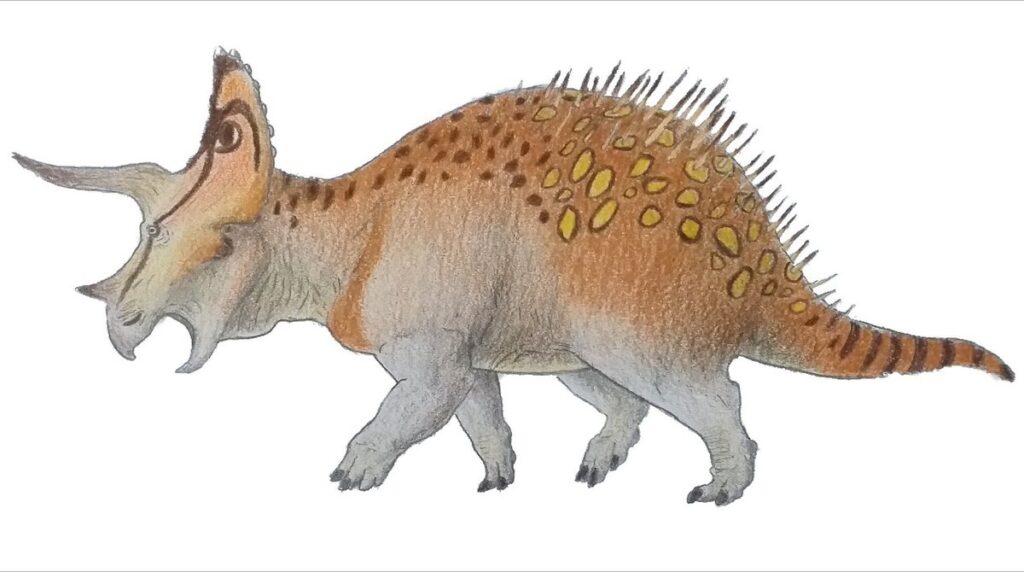
Triceratops, whose name means “Three-Horned Face”, is a well-known Late Cretaceous ornithischian dinosaur. This herbivore, notable for its iconic skull featuring two large brow horns and a smaller nasal horn, roamed present-day North America around 68 to 66 million years ago. With a massive body and distinctive frill, Triceratops was among the last non-avian dinosaurs before the Cretaceous-Paleogene extinction event.
While this is one of the most famous dinosaurs, you may still be surprised by these interesting Triceratops facts.
1. Triceratops only had two horns made of bone

Despite the name, Tricerotops technically had only two true bony horns growing from its brow. The third horn-like structure was a smaller nasal protrusion made primarily of keratin, the same protein that human fingernails and hair are made of. The keratinous composition of the nasal horn implies it may have been less robust than the bony orbital horns. But that doesn’t mean it wasn’t strong. Today’s rhino horns are also made of keratine. This nasal horn used to be very short like a stump for much of this dinosaur’s evolutionary history. A 2014 study found that it wasn’t until much later in the twilight years of this lineage that this ‘fake’ horn grew longer while its beak shrank.
2. Its skull was simply massive

Triceratops‘ skull is its most striking feature, accounting for approximately one-third of its entire body length. Some of the largest Triceratops skulls ever discovered measure up to 3 meters across (Big John), making them one of the largest skulls of any land animal. This massive skull supported the large frill and the two bony horns and housed a complex array of teeth suited for its herbivorous diet.
The size and weight of the skull suggest that Triceratops had robust neck and shoulder muscles to support such a heavy head. This anatomical feature was crucial for defense against predators and played a significant role in intra-species competition. Showing off a large, imposing head with battle scars could deter rivals and attract mates.
3. The mighty horns probably played a role in showing off good genes and attracting mates
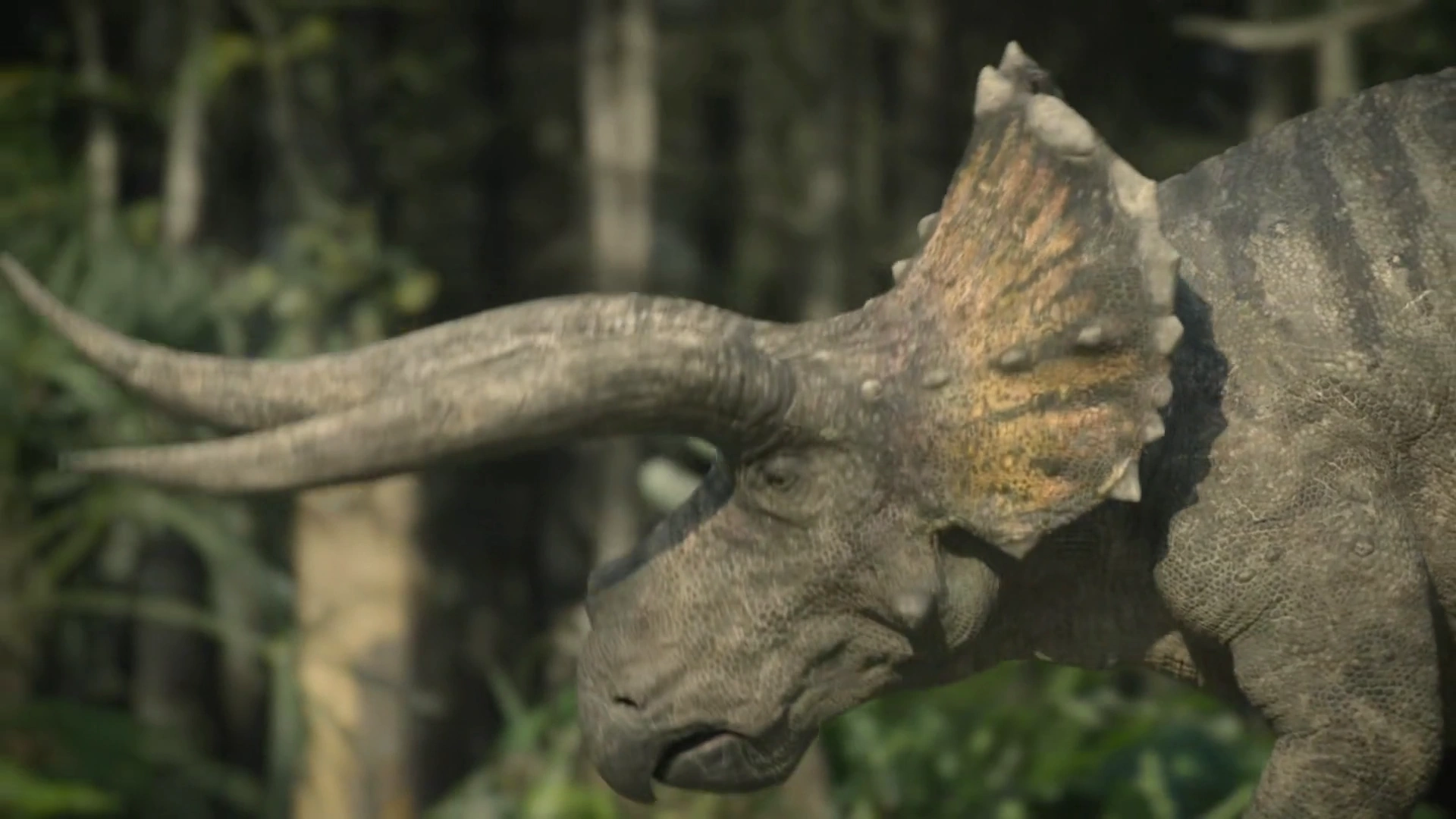
There’s no doubt that a primary function of the Triceratops‘ large horns was defense against predators. However, recent studies suggest these features also played a significant role in mating rituals and social hierarchy. The size and shape of Triceratops horns may have been indicators of strength and health, making them key factors in attracting mates. When it came to Triceratops horns, size indeed mattered.
“Individuals are advertising their quality or genetic make-up,” explained Andrew Knapp of Queen Mary University, London. “We see that in peacocks too, with their tail feathers.”
Additionally, horn-wielding contests, akin to the jousting matches of some modern-day ungulates, could have been a common sight among Triceratops.
4. Triceratops had a thick cranial frill that acted as a shield
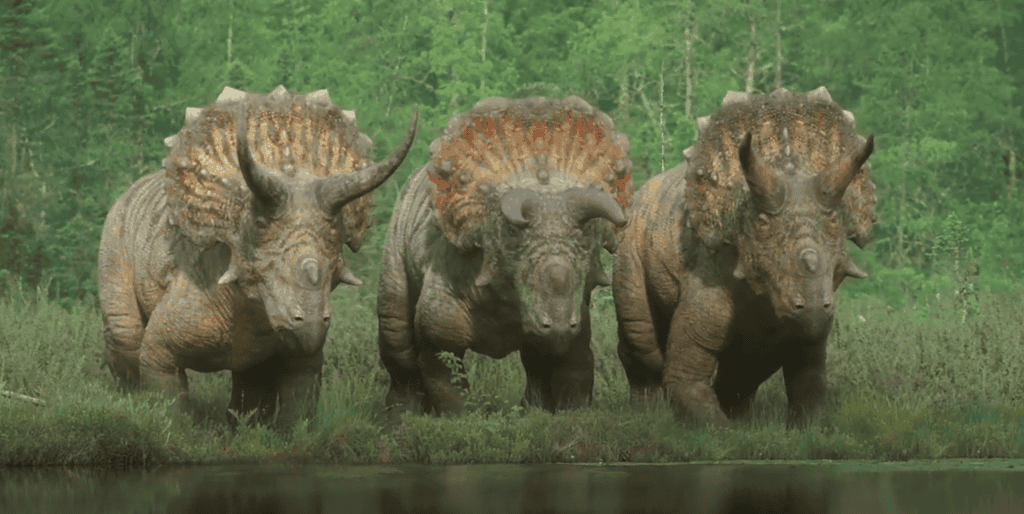
Triceratops‘ frill is the other of its most iconic features, yet its precise function remains a topic of ongoing debate. Extending from the neck and enveloping the rear of the skull, the frill may have served multiple purposes. One prevailing theory suggests that it functioned as a protective shield against predators, guarding the vulnerable neck area during attacks. Another hypothesis is that the frill and the horn cores were used for thermoregulation, keeping body temperature in check by radiating heat.
These frills could have been brightly colored and used in mating displays, similar to the plumage of some modern birds. Moreover, variations in frill shape and size across individuals could indicate a level of individual recognition among these dinosaurs, facilitating social interactions within their species.
5. It grew 800 teeth stacked in multiple columns throughout its lifetime
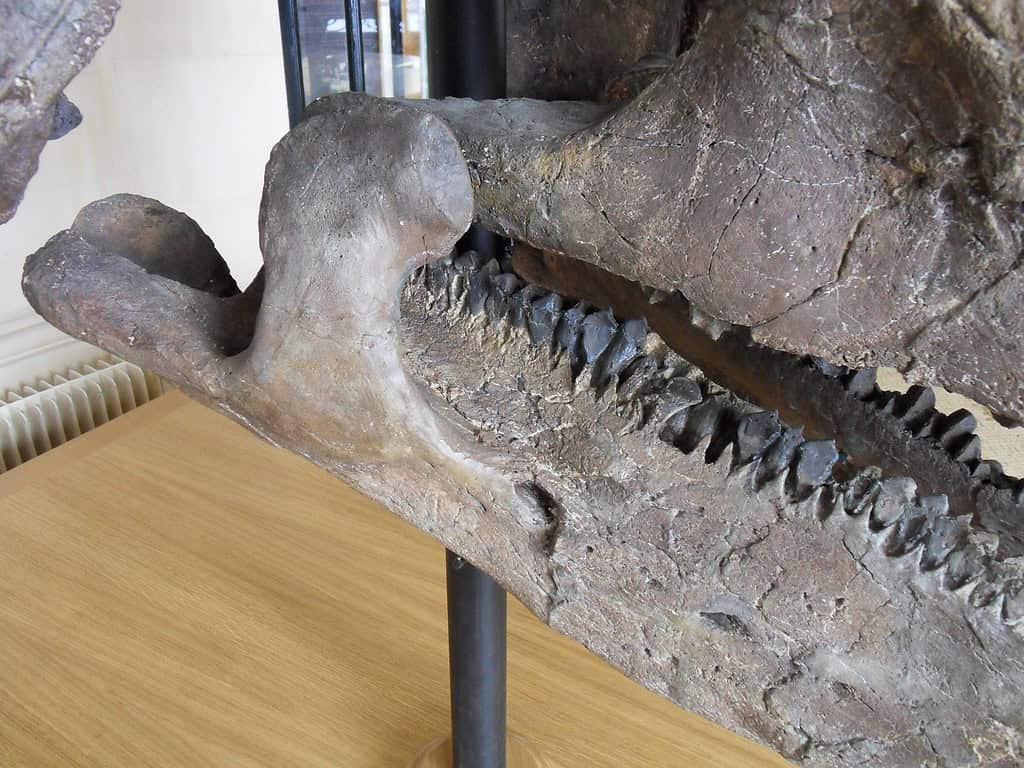
Triceratops‘ anatomy was perfectly adapted for quick and effective feeding on large amounts of plant material. Equipped with a sharp beak and a set of constantly replacing teeth, Triceratops could rapidly consume the tough, fibrous vegetation that made up their diet. The beak could deliver extremely powerful bites, judging from its jaw structure. This powerful tool allowed Triceratops to break apart tough plant stems, strip foliage, and manipulate objects within its environment.
The genus had a unique dental arrangement known as a “dental battery”, which comprised multiple sets of teeth stacked on top of each other in columns. As the uppermost teeth wore down from use, they were replaced by the ones below, ensuring the dinosaur always had a functional set for processing tough plant material. Estimates suggest that Triceratops could have had up to 800 teeth throughout its lifetime, with only a fraction of these being in use at any given time. This capability allowed them to meet the high energy demands of their large bodies and maintain their health and strength.
6. Scientists first thought Triceratops was some giant bison
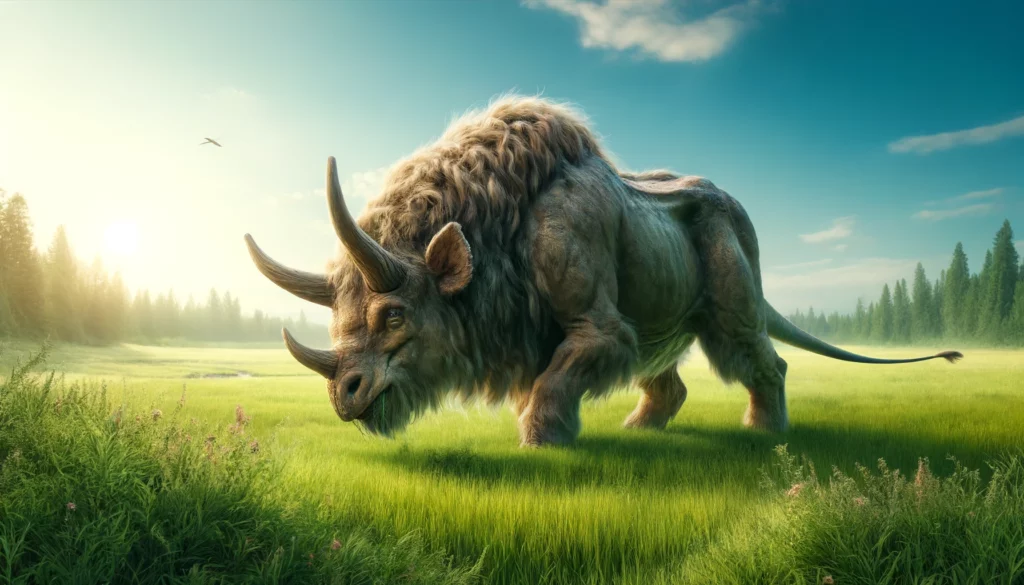
When the first Triceratops fossil was discovered in 1887 near Denver, Colorado, it was mistakenly identified as a giant extinct bison. The fossil, consisting of only two brow horns attached to a skull roof, led Othniel Charles Marsh on a false track. Marsh, influenced by the bison-like appearance of the horns and the incomplete nature of the specimen, named it Bison alticornis. It was not until more complete skulls were found that Marsh recognized these as belonging to a new genus of horned dinosaurs, which he named Triceratops, acknowledging his earlier mistake.
7. Their ancestors were the size of house cats
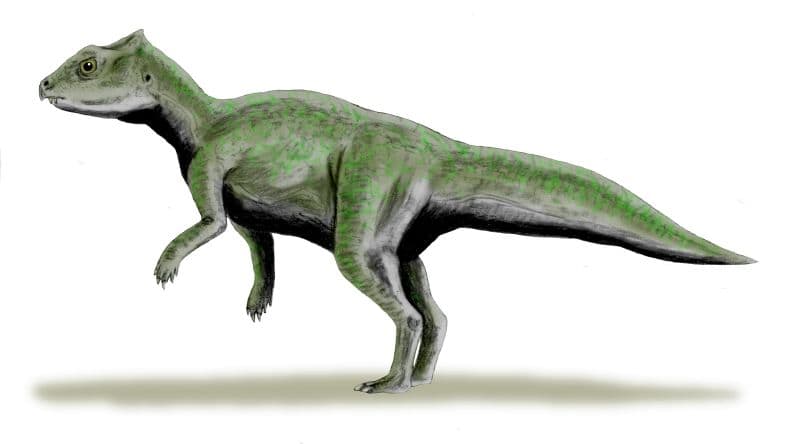
Triceratops were built like a tank, but their ancestors were significantly smaller, about the size of large house cats. The earliest ceratopsians were small dinosaurs who roamed the Earth during the Middle Jurassic period. These early dinosaurs, such as Micropachycephalosaurus and Yinlong downsi, discovered in China, showcased the initial development of features that would define their later, more famous descendants. Predator pressure and environmental changes would see these modest-sized forerunners evolve into impressive ceratopsians a few million years later.
8. Despite its horns and frill, some predators still tried their luck
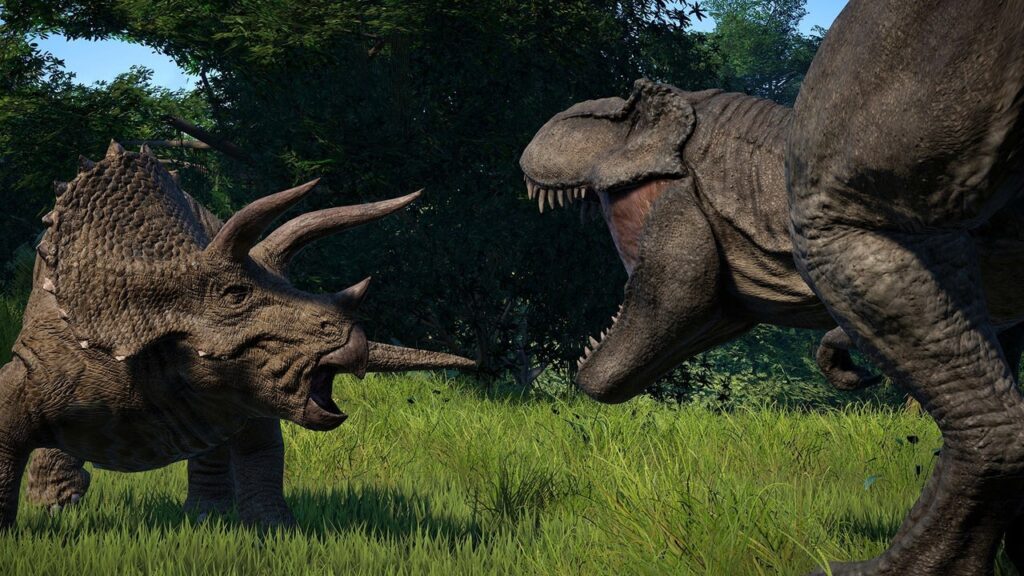
Triceratops often found itself in the crosshairs of the apex predators of its time, notably the Tyrannosaurus rex. Evidence from fossil records, including bite marks on Triceratops’ bones and frills, points to frequent confrontations between these giants. These encounters were likely a dramatic affair. The damage found on some fossils suggests that these were not always fatal, indicating that Triceratops could survive and possibly heal from predatory attacks.
9. Triceratops liked going solo, but stayed together while juveniles

The social behavior of Triceratops—whether they lived alone or in herds—remains a topic of debate among paleontologists. The discovery of multiple juvenile Triceratops fossils suggests that younger individuals may have grouped together for protection or social learning. However, adult Triceratops fossils are often found alone, potentially indicating a shift to a more solitary lifestyle as they age. This is a common pattern in the animal kingdom, where juvenile group behavior transitions to solitary adult lives in several species.
10. It’s possible it may have had quills like a porcupine
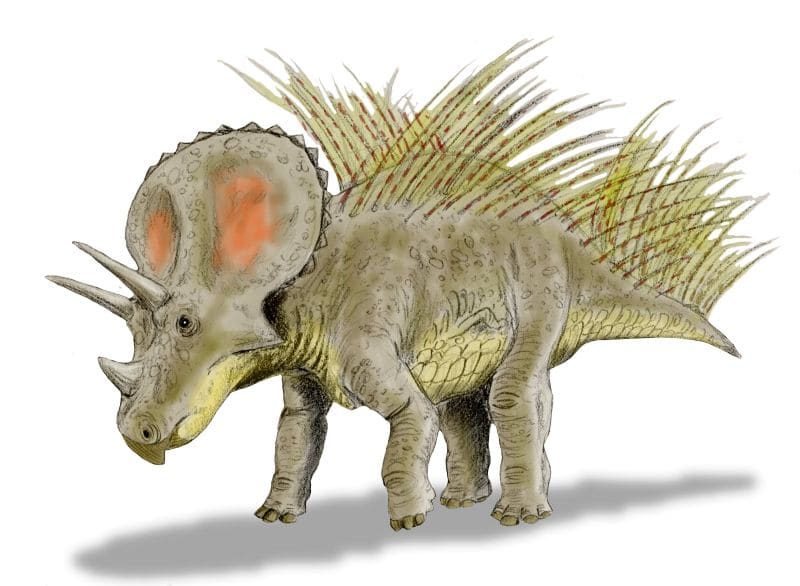
I saved the best for last. Recent studies have explored the possibility that some ceratopsians might have sported quills, similar to modern porcupines. While not universally accepted, evidence from related species suggests that these quills could have been present on parts of their bodies, possibly used for display or additional protection. This hypothesis stems from findings in other ceratopsian species where quill knobs indicate the attachment of protein filaments. The idea of quills on Triceratops suggests a more complex appearance and potentially diverse behaviors influenced by these features.






